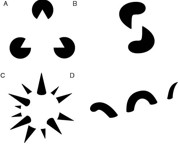Author Spotlight
Guest post: Gabriel Blackwell on Ross Macdonald

“The surprise with which a detective novel concludes should set up tragic vibrations which run backward through the entire structure.”
That’s Kenneth Millar, better known as Ross Macdonald, who wrote eighteen Lew Archer novels over thirty years before Alzheimer’s put an end to his career. Incredibly, as the man got closer and closer to Alzheimer’s, his structures, those surprises, only became more and more complex. The best of his novels, from The Galton Case right on through to The Blue Hammer must have required extraordinary mental effort just to keep the characters straight, which, of course, they never were to begin with.
Macdonald’s characters rarely have fixed identities. Those surprises that he mentions in the quote are less Agatha Christie or Sherlock Holmes than “General Hospital”: a wife is really her husband’s daughter, a Frenchman is really a Panamanian, but also really a Frenchman, etc. Like I said, complex. Phantasmagoric even. Sometimes illegal.
They’re Forster’s “flat” characters (at least at first glance), as most characters in detective novels are: easily recognizable types (the hooker with a heart of gold, the overbearing mother, the ladies’ man) used as shorthand to move the plot along. But they are also not types, because they are often subsequently revealed to be something that, when it works (as it often does in the best of Macdonald), does not simply defy the reader’s expectations but really has the effect of giving the characters an unexpected and immediate depth; like opening an umbrella inside of a balloon, the character goes instantly from flat to three-dimensional, and all as a function of the plot.
Macdonald was an enthusiast of Gestalt psychology, a system radically simplified in the phrase “the whole is greater than the sum of its parts” (and better thought of as the whole is entirely different from what we anticipate when bringing its parts together, like the blind men describing the elephant). By giving his characters depth through his plots, Macdonald gives us a third category of character. Not “flat.” Not “round” either, not exactly, but three-dimensional; a whole that (once we have reached the conclusion, the “surprise”) is much greater than what we expected.
Look at these figures[at the top of the post], and try not to see the triangle in A, or the rectangle in B.
Any Joe Straightline can draw a triangle or a rectangle. Doesn’t it seem like it would be more fun to draw the three Pacmen in A, or those twisted packing peanuts in B? And not just for the person drawing them but for the person seeing them? (The image, by the way, is from the Wikipedia page for Gestalt psychology.)
I think that Macdonald was looking for a novel way to draw what is, after all, a familiar shape. The detective/mystery form gave him the outline of the shape—the triangle—and he proceeded to teach himself how to draw around it while still evoking it.
But perceiving that white space in the middle of the Pacmen as a triangle actually has the mysterious effect of giving it an extra dimension, doesn’t it? As though it were not just a triangle but a prism, or a pyramid. And that’s what Macdonald has—an extra dimension.
Could this explain why the detective novel has been so popular with “post-modern” writers? Robbe-Grillet, Reed, Auster, Berger, Borges, Pynchon, Coover, Sciascia, Gadda, Sorrentino, Ball, Berry, etc.—or are they all just drawing spikes and pasta because they’re tired of triangles and rectangles?
If you want to get right to the heart of Macdonald, start with The Chill, then head for the last few books of the series. Pacmen all.
—Gabe Blackwell’s blog is here
